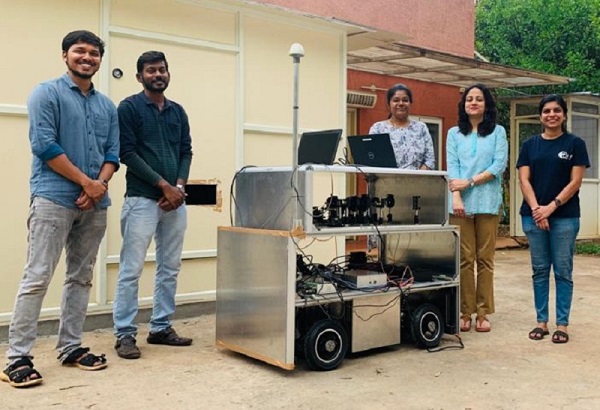
By Anand Parthasarathy
Bangalore, April 8, 2023: In October 2019 a sensational announcement by Google claimed that it had achieved ‘ Quantum Breakthrough’ – it had developed and harnesses a quantum computer to solve a problem in seconds, that would have taken conventional computers hundreds of years.
Ever since, there has been a global race among a handful of nations to harness quantum computing to further their own development goals.
India embarked on its own national Quantum technology programmes – and a key priority was the harnessing of Quantum technology for developing highly secure and encrypted communication systems.
That mission was brought a step closer to fruition last week, by a team of researchers at the Raman Research Institute ( RRI) in Bangalore.
Founded in 1948 by the Indian physicist and Nobel Laureate, Sir C.V. Raman, the institute since 1972has functioned as an autonomous research institution of the Government of India’s Department of Science and Technology (DST).
Working in collaboration with the U.R. Rao Satellite Centre of the Indian Space Research Organisation (ISRO) also based in Bengaluru, a team at the Quantum Information and Computing (QuIC) Lab of the RRI has successfully demonstrated a secure channel of communication between a stationary source and a moving platform. The significance of this breakthrough cannot be overstated:
Just over a year ago the same team demonstrated a similar communication channel between two fixed locations on campus. By improving on this, to make one of the locations mobile, the researchers have now brought closer, their eventual mission of a secure quantum communication channel between a fixed station on earth and an orbiting satellite.
To maintain communication with moving platform possible, the QuIC team developed a Pointing, Acquisition and Tracking (PAT) system, for the stationary source which must at all times remain in the Line of Sight of the moving platform. This in itself is not unusual and is a feature of satellite communications.
What is unique to the RRI work is that it established a secure link between fixed and moving stations, using what is known as Quantum Key Distribution ( QKD). This is the first time this has been achieved in India, says project leader, Urbasi Sinha.
She explains: “To mimic satellite motion, we progressed from home-built linear track to a circular track and then built an entire moving vehicle carefully aligned to the receiver.”
Providing further details, Prof Sinha adds: First, we developed x-y tracking without the use of sophisticated gimbal mechanisms. Later, we used the gimbal mechanism to fine-tune the tracking in several degrees of freedom. To mimic the satellite motion, we advanced from a home-built linear track to a home-built circular track. And finally, an entire moving vehicle was built and carefully aligned to the receiver module (nicknamed as Bob) with attendant optics, opto-mechanics and electronics -- all working in tandem with the high-end time synchronisation solutions which were also developed."
Why QKD?
Classical cryptography – the coding and decoding of messages, as practiced today involves encrypting and sending a message and then decrypting it at the receiving end, using a combo of ‘public’ and ‘private’ keys. These keys depend for their strength on their length and the complicated math they are based on.
But with supercomputers becoming more powerful by the day – and more portable -- public keys are increasing breakable. This is where Quantum Keys are superior.
It makes the entire chunk of data much harder to hack or crack – and this is what the team at RRI has achieved.
QKD is currently the most secure means of facing any threats from efforts at breaking the algorithms of classical computing cryptography, adds Prof Sinha.
By establishing that India can harness the superior security of quantum cryptography and establish such secure links with mobile platforms, the researchers in Bengaluru, have brought nearer the day when such ultra secure links can be extended to satellite-based communication. The implications for military communications are obvious.
(A slightly shorter version of this article has appeared in Swarajya)